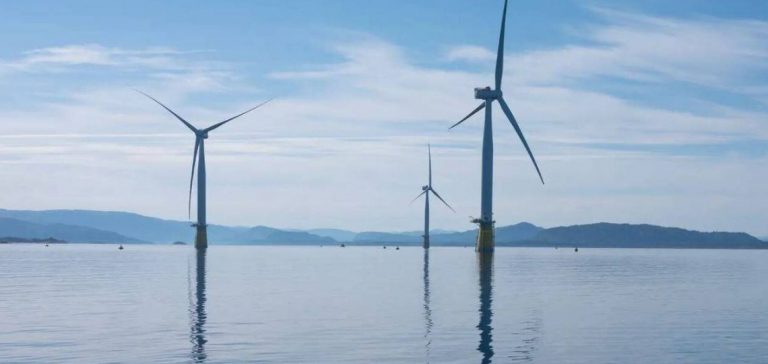Norway has announced an ambitious plan to support the development of floating wind by setting a subsidy cap of 35 billion Norwegian kroner (NOK), approximately 3.3 billion US dollars (USD). This measure marks a significant step in promoting offshore renewable energy and aims to position Norway as a global leader in this emerging field.
The first commercial call for tenders for floating wind is scheduled for 2025 and will focus on the Utsira Nord area. This ambitious project envisions a total capacity of 2.25 gigawatts (GW), spread across three distinct sites. Floating wind technology, although promising, remains in the development phase due to high costs and the complexity of the necessary infrastructure.
Challenges and Government Interventions
Developing floating wind requires substantial intervention from the Norwegian government due to the significant investments needed. Production costs are particularly high, as evidenced by previous projects. For example, a project recently awarded to the United Kingdom shows production costs of 2.7 NOK/kWh, nearly twice the Norwegian government’s estimates of 1.42 NOK/kWh. This disparity highlights the importance of subsidies in making projects economically viable.
Despite this financial support, many industry players remain skeptical about the government’s electricity price forecasts and production cost estimates. Companies must balance subsidies with the need for project maturity and return on investment requirements to ensure long-term viability. Currently, at least 13 consortiums have expressed interest in this project, including giants like Equinor and Ørsted, which are seeking to establish a strong presence in this strategic sector.
Strategic Objectives and Challenges
Norway’s primary objective is to create a floating wind ecosystem that can become a global standard. The country aims to capitalize on its geographical advantages and expertise in offshore energy, primarily developed in the oil and gas sectors. By investing in floating wind, Norway intends to diversify its energy mix and reduce its dependence on fossil fuels while contributing to the European Union’s (EU) climate goals.
However, several uncertainties remain regarding future costs and investor return expectations. These factors could slow the deployment of floating wind projects if cost forecasts are unrealistic or if investment returns do not meet developers’ expectations.
Impact on Decarbonization Strategy
This initiative is part of a broader strategy to decarbonize Norway’s energy sector. By relying on breakthrough technologies like floating wind, Norway aims to transform its energy sector sustainably. This transformation is essential to meet the EU’s climate commitments and maintain the country’s competitiveness in an increasingly complex European energy environment.
The development of floating wind will also create new economic and employment opportunities in the renewable energy sector. By investing now in this technology, Norway hopes to attract international investments and strengthen its position in the global green energy market.






















